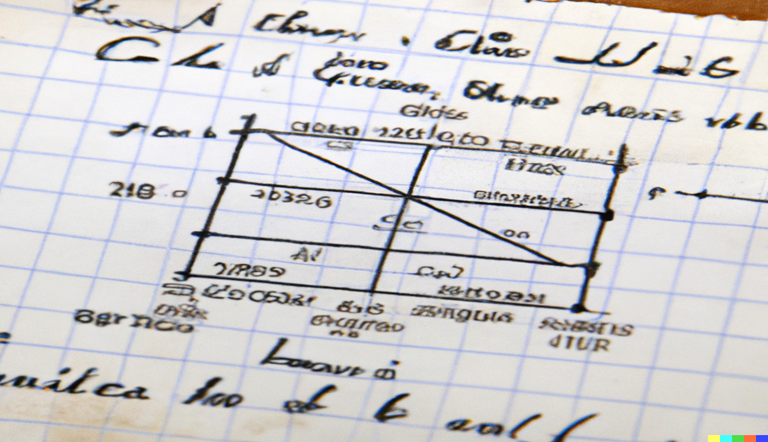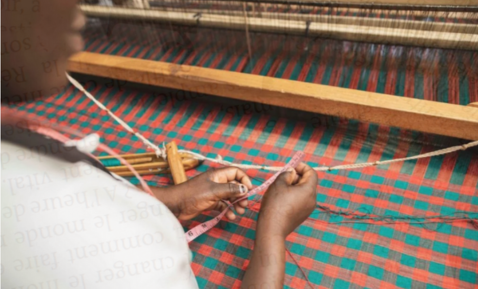Unveiling Ancient Marvels: Africa’s Pioneering Contribution to Mathematics
Introduction
Africa’s rich historical legacy extends far beyond its cultural tapestry and breath-taking landscapes; it has also made significant contributions to the field of mathematics. While the continent’s mathematical achievements have often been overlooked, it is crucial to acknowledge and celebrate the ground-breaking discoveries arising from Africa’s diverse civilizations. One such marvel that sheds light on Africa’s mathematical ingenuity is the Lebombo Bone, a remarkable artefact that offers a glimpse into the mathematical prowess of our ancestors.
Unearthing the Lebombo Bone: An Ancient Mathematical Artefact
The Lebombo Bone, named after the Lebombo Mountains where it was discovered, is an ancient artefact crafted from the fibula of a baboon. Dating back approximately 35,000 years, it serves as a testament to the intelligence and innovative thinking of early humans in Africa. Discovered in Border Cave, situated along the border between South Africa and Eswatini (formerly Swaziland), this bone captivates researchers and historians alike due to its enigmatic mathematical markings.
While its precise purpose remains a subject of scholarly speculation, the Lebombo Bone’s unique mathematical notations spark curiosity and intrigue. The bone is approximately 8 centimetres long and features clearly deliberate etchings along its surface. As we delve into the world of the Lebombo Bone, we aim to unravel its ancient mathematical secrets and decipher the significance they hold.
Decoding the Mathematical Insights of the Lebombo Bone
The intricate numerical notations etched onto the Lebombo Bone beckon us to explore their underlying meaning. Researchers have carefully analysed these markings, and their efforts have revealed a fascinating array of mathematical symbols and calculations. These primitive inscriptions undoubtedly signify the advanced mathematical understanding possessed by the individuals who crafted this awe-inspiring artefact.
Through meticulous examination, it becomes apparent that the Lebombo Bone’s markings likely represent a numerical system. The etchings consist of various notches and lines arranged in designated clusters, possibly representing quantities or measurements. While the exact mathematical calculations remain elusive, the bone’s patterns and distributions hint at an astute mathematical mind at work.
Beyond the individual markings’ significance, the Lebombo Bone’s overall purpose remains a captivating puzzle. Some experts speculate that it could have served as a lunar calendar or an early tallying device used for tracking significant events within the community. Regardless of its precise function, the bone stands as living proof of early African civilizations’ mathematical prowess and their contributions to the study of numbers.
Africa’s Mathematical Legacy: Beyond the Lebombo Bone
The Lebombo Bone represents just one piece of Africa’s mathematical legacy. The continent boasts a rich tapestry of mathematical discoveries that have been overlooked by mainstream historical accounts. Africa’s mathematical achievements span centuries, from the geometric constructions in Ancient Egypt to the complex numerical systems of the Bantu-speaking civilizations. By shining a light on these remarkable contributions, we can recognize the profound impact African mathematical principles have had on global knowledge.
For instance, Egypt’s Ancient Egyptians pioneered the development of geometry, which influenced subsequent civilizations and laid the foundation for various fields of mathematics. Notably, the Rhind Mathematical Papyrus showcases the Egyptians’ exceptional understanding of fractional calculations. Similarly, the Bantu-speaking peoples of Central and Southern Africa crafted advanced numerical systems that exhibited a deep comprehension of mathematics.
Contemporary Relevance: Lessons from the Lebombo Bone
The Lebombo Bone holds more than just historical significance; it offers valuable lessons and insights that resonate with our modern world. The preservation of ancient mathematical artefacts reminds us of the importance of protecting and understanding our shared heritage. By studying and appreciating the Lebombo Bone, we can gain a newfound appreciation for the diverse ways in which humans have approached and understood mathematics throughout history.
Moreover, the ancient mathematical knowledge encapsulated within the bone has the potential to inspire contemporary applications in various fields. Exploring the mathematical insights offered by the Lebombo Bone may unearth new techniques or perspectives applicable to modern problem-solving. Acknowledging the cultural and mathematical diversity represented by artifacts like the Lebombo Bone encourages us to embrace a wider range of perspectives and approaches in shaping the future of mathematics.
Conclusion
In summary, the Lebombo Bone stands as a testament to Africa’s pioneering contribution to mathematics and challenges misconceptions surrounding historical narratives. Africa’s mathematical legacy extends beyond this remarkable artefact, encompassing a plethora of achievements that have shaped the course of mathematical development worldwide. By recognizing the value and significance of the Lebombo Bone, we can broaden our understanding of mathematics and embrace the role of diverse perspectives in shaping our future.
As we delve into the intricate notations etched upon this ancient artefact, we uncover a wealth of mathematical insight that challenges preconceived notions and reshapes our understanding of the discipline. The Lebombo Bone calls us to embrace diversity and recognize the multitude of voices that have shaped our collective mathematical knowledge. By celebrating and exploring the mathematical legacy of Africa, we enrich our understanding of the world’s civilizations and move towards a brighter, more inclusive future
Frequently Asked Questions:
Q: How was the Lebombo Bone discovered?
A: The Lebombo Bone was discovered in Border Cave, located on the border between South Africa and Eswatini (formerly Swaziland).
Q: What do the mathematical markings on the Lebombo Bone represent?
A: The mathematical markings on the bone likely represent a numerical system, although the precise calculations and meanings are still subject to further research and speculation.
Q: What is the significance of the Lebombo Bone in the context of African mathematics?
A: The Lebombo Bone represents a small glimpse into Africa’s rich mathematical heritage. It challenges misconceptions and highlights the advanced mathematical understanding possessed by early African civilizations.
Top of Form




